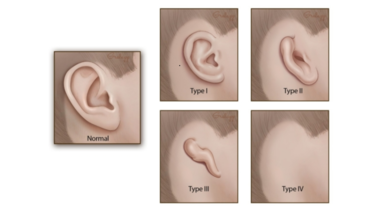- Health Conditions A-Z
- Health & Wellness
- Nutrition
- Fitness
- Health News
- Ayurveda
- Videos
- Medicine A-Z
- Parenting
- Web Stories
Explained: Why Flight Journeys Make You Bloated

(Credit-Canva)
Being on flights can make some people nervous. As the plane gains momentum and speeds off the ground, some people feel an unexplained pressure in their stomach. The phrase ‘butterflies in stomach’ perfectly summarizes this feeling, as it is a mixture of excitement and anxiety. However, going through the entire flight with built-up gas and the bloated feeling can be one of the most uncomfortable experiences.
Why Do Flights Cause Bloating?
Airlines often caution people about how changes in cabin pressure during takeoff and landing on long-haul flights can lead to health problems. The air pressure inside the cabin is lower than at sea level. As the cabin pressure decreases during flight, gases in the body expand, which can cause pressure and bloating in the stomach and digestive system. Bloating often occurs when food isn't properly digested, leading to gas production by bacteria in the intestines. They echoed the advice to eat light, probiotic foods before flying and avoid gas-producing foods and carbonated drinks during travel.
Tips To Avoid Bloating
The best way to find lasting relief from bloating depends on what's causing it. Sometimes, getting a professional diagnosis is necessary to understand the underlying issue. However, if you're looking for home remedies to ease bloating today or prevent it tomorrow, here are some options you can try. According to the Cleveland Clinic,
Peppermint, Chamomile, Ginger, Turmeric, and Fennel Teas: These can aid digestion and help your body process gas more effectively.
Dandelion Tea: This tea may help reduce water retention, which can contribute to bloating.
Regular Exercise with Core Strengthening: Focusing on exercises that strengthen your core muscles can help improve digestive function and reduce abdominal bloating over time.
Should You Avoid Certain Foods Before Flight?
To help avoid gas problems and have a more comfortable flight, avoid certain things. Expert explains that the day before you fly, have a meal with seasonal vegetables. These foods contain fiber and help you avoid any gas build up on the day of the flight.
On the morning of your flight, make sure you do things like drink warm lemon water, avoid caffeine or choose herbal tea and limit carbohydrates. Doing things like walking around the airport while waiting, using the bathroom before boarding and avoiding oily and salty foods during the flight also helps.
Some other things you should do is to not eat things like fruits, legumes, and vegetables, or dairy products because they can contribute to bloating. Try only consuming non-alcoholic and non-carbonated drinks.
To avoid feeling anxious and stressed during the flight, move around the cabin every two hours on long flights, keep doctor-approved pills for digestive issues and consult a doctor if you have significant discomfort before or after flying.
Does Your Sunscreen Need A Reality Check—On SPF, Skin Cancer And Tanning Myths

Credits: Canva
Scroll through TikTok, Instagram, or YouTube and you’ll find an unsettling pattern: influencers dismissing sunscreen as unnecessary—or even harmful. Some promote “slow tanning” to build skin’s melanin. Others share DIY sunscreen recipes made from oils and butters. A few outright claim sunscreen causes skin cancer.
This narrative taps into a broader skepticism toward conventional health advice. But dermatologists say it’s a dangerous trend that risks reversing decades of public health progress.
Celebrity voices have amplified these claims. Former TOWIE star Sam Faiers told her 2.5 million Instagram followers she avoids sunscreen for her children, citing fears of “toxic ingredients.” TV personality Kelsey Parker has suggested SPF causes skin cancer. Influencer Lauryn Goodman advises followers to “train your skin” by gradually increasing sun exposure.
To many followers, this advice feels empowering. To dermatologists, it’s reckless.
“The idea that SPF is toxic or that children can ‘build immunity’ to the sun is not only irresponsible—it’s dangerous,” says Dr. Angela Tewari, consultant dermatologist at King’s College Hospital in London. “These views are unscientific and put children’s health at serious risk.”
What Science Actually Shows About Sunscreen Safety?
Concerns about sunscreen ingredients often stem from lab studies—like those showing that high doses of certain chemicals affect rats in the womb. But context matters. To match the chemical exposure levels in those studies, a human would need to apply sunscreen daily for decades—up to 277 years in some calculations.
More recent research, such as a 2019 JAMA study, confirmed that some sunscreen chemicals enter the bloodstream. However, the amounts studied were far higher than typical daily use, and no harm to humans was found.
No credible human studies have shown that sunscreen ingredients like oxybenzone cause cancer. On the contrary, evidence overwhelmingly supports sunscreen’s role in reducing skin cancer risk.
Why Is Skin Cancer Risk Is Real And Rising?
Melanoma, the deadliest form of skin cancer, is climbing worldwide. In the UK, diagnoses are projected to hit a record 21,300 in 2025—up 22% from 2023. In the US, the American Cancer Society estimates more than 100,000 new melanoma cases in 2025.
About 90% of skin cancer cases are linked to unprotected sun exposure. Childhood sunburns are especially dangerous—just one blistering burn can nearly double lifetime melanoma risk. That’s why dermatologists recommend SPF 50 for children during high UV months, from March to September in northern climates, and year-round in sunnier regions.
How Sunscreen Works?
There are two main types:
- Chemical sunscreen absorbs UV radiation and turns it into harmless heat. Ingredients include avobenzone, oxybenzone, and octocrylene.
- Mineral sunscreen (also called physical sunscreen) contains zinc oxide or titanium dioxide to physically block and reflect UV rays.
- Both protect against UVB rays (which cause burns) and, in broad-spectrum formulas, UVA rays (which cause premature aging and contribute to cancer).
SPF, or sun protection factor, tells you how much longer you can stay in the sun without burning compared to no protection. SPF 30, for instance, lets you stay 30 times longer without burning—assuming correct application and reapplication every two hours.
Higher SPFs provide more margin for error. A 2018 study found SPF 100+ sunscreen was significantly more effective than SPF 50+ in preventing sunburn during real-world use.
What is The Myth of ‘Slow Tanning’?
Proponents of slow tanning argue that gradually building sun exposure helps the skin produce melanin, offering natural protection. While melanin does absorb some UV rays, it’s no substitute for sunscreen. Even deeply pigmented skin can burn and sustain DNA damage, which accumulates over time.
According to dermatologists, “training” the skin is a myth. UV damage occurs from the very first unprotected exposure—whether or not you burn.
Why Are Some People Abandoning Sunscreen?
Distrust in health authorities, desire for “natural” living, and negative personal experiences with certain products all contribute. Some people have had allergic reactions or irritation from sunscreen ingredients, leading them to avoid it altogether.
That’s why dermatologists stress that not all sunscreens are the same. Mineral sunscreens are generally better tolerated by sensitive skin. Newer formulations avoid oxybenzone and other controversial ingredients, while still providing strong UV protection.
The American Academy of Dermatology and the World Health Organization both recommend daily use of broad-spectrum sunscreen with SPF 30 or higher. They emphasize that sunscreen is one of the most effective tools to prevent skin cancer—especially when combined with shade and protective clothing.
How to Protect Yourself And Be 'Safe'?
- Choose broad-spectrum SPF 30 or higher.
- Apply liberally—most adults need about a shot glass–sized amount for full body coverage.
- Reapply every two hours, or after swimming or sweating.
- Use mineral formulas if you have sensitive skin or want to avoid certain chemicals.
- Pair sunscreen with shade and UPF-rated clothing for best results.
The anti-sunscreen movement thrives on fear and mistrust, but science paints a very different picture. Sunscreen doesn’t cause skin cancer—it helps prevent it. And while research into ingredients continues, the risks of skipping SPF are well-established and potentially deadly.
Scientists Link These 6 Sleep Traits To 172 Diseases, Check Your Risk Level

Credits: Canva
We tend to hear we need a "good night's sleep" if we want to be healthy. But there's evidence now that it's not how much you sleep—it's how you sleep. A huge study of more than 88,000 individuals has identified six specific sleep characteristics with the risk of developing 172 separate diseases, and this indicates that poor sleep rhythms can be much more harmful than we ever imagined.
Investigators at Peking University and the Army Medical University in China examined data from the UK Biobank, tracking participants for a median of 6.8 years. They didn’t just track how long people slept—they examined six core sleep traits:
- Sleep length
- Sleep onset (bedtime)
- Sleep rhythm (regularity of sleep-wake cycles)
- Extent of sleep
- Sleep efficiency
- Frequency of night wake-ups
Their findings, published in Health Data Science, show that sleep rhythm—how consistently you go to bed and wake up—was the single strongest predictor of health outcomes.
Why Sleep Rhythm Is Important Your Health?
Participants with the most irregular sleep rhythms faced up to a 2.8-times higher risk of Parkinson’s disease and a 1.6-times higher risk of type 2 diabetes compared to those with the most regular patterns.
Sleep rhythm was associated with nearly half of the 172 diseases identified—three times as many disease links as sleep duration or bedtime alone. That list included hypertension, COPD, acute kidney failure, depression, and several metabolic and cardiovascular conditions.
“Time we broaden our definition of good sleep beyond just duration,” says Shengfeng Wang, senior author and epidemiologist at Peking University.
Why Bedtime Is More Crucial Than You Might Expect?
The research also uncovered significant bedtime-related risks. People who routinely went to bed after 12:30 a.m. were 2.6 times more likely to develop liver cirrhosis than those who went to bed before 11:30 p.m.
Meanwhile, low sleep efficiency—time spent actually sleeping versus just lying in bed—was linked to a nearly 1.8-fold increase in respiratory failure risk.
Why Wearable Data Changes the Game?
This study stands out because it used both self-reported surveys and objective wearable sleep monitor data. And that revealed an important truth: we’re not always accurate about our own sleep. Nearly one in four people who claimed to be “long sleepers” actually slept fewer than six hours a night when measured objectively.
This discrepancy matters because previous studies relying solely on self-reported sleep may have underestimated—or overestimated—the role sleep plays in various diseases.
The researchers explain, “Some participants with difficulty falling asleep or keeping stable sleep may have spent a long time in bed but have short real sleep.” That misclassification skews results and may mask the impact of poor sleep patterns.
Traditionally, public health advice has focused on getting seven to nine hours of sleep per night. But this research indicates that sleep quality, timing, and regularity could be as significant—if not more so—than duration alone. For instance:
- Consistent sleep rhythms seem to lower risk across neurological, cardiovascular, and metabolic illness.
- Earlier bedtimes could guard against liver health issues.
- High sleep efficiency could lower respiratory and cognitive decline risk.
Whereas the research can't establish causation—it demonstrates correlations, not cause-and-effect per se—the size of the dataset makes the results difficult to ignore. The researchers also confirmed the findings using a different large database, the U.S. National Health and Nutrition Examination Survey (NHANES), further bolstering the evidence that these sleep characteristics are associated with general health outcomes.
If verified by subsequent research, these results may redefine sleep health policy and contribute to guided interventions for vulnerable populations.
Disease was once recognized as a consequence of poor sleep, but this study puts a different spin on the discussion. It implies that we may need to consider sleep as much as we consider diet—not merely the "amount" (calories or hours), but the "quality" and "consistency" count as much.
As Dr. Wang and collaborators say, the aim should be to "expand our definition of good sleep" to encompass rhythm, timing, and efficiency. At least for the moment, that could entail establishing a regular bedtime, steering clear of late-night screen exposure, and tracking patterns with wearable devices—rather than merely hours slept.
What Happens When You Have 'Small Ear'? All That You Need To Know About Microtia

Credits: Stanford University
Microtia, also known as "small ear" is a rare birth defect where the external part of a child’s ear is underdeveloped and often misshapen. The condition can affect one ear (unilateral) or both ears (bilateral), with about 90 percent of cases being unilateral.
In the United States, microtia occurs in roughly 1 to 5 out of every 10,000 live births, while bilateral cases are much rarer at about 1 in 25,000 births.
Four Grades of Microtia
Doctors classify microtia into four grades, depending on severity:
Grade I: The ear appears smaller but mostly normal, though the ear canal may be narrowed or absent.
Grade II: The earlobe may look normal, but the upper two-thirds are underdeveloped and malformed. The ear canal may be missing or narrow.
Grade III: The most common form, where parts of the external ear are present but underdeveloped. There is usually no ear canal.
Grade IV: Also called anotia, where no ear or ear canal is present.
Possible Causes and Risk Factors
Microtia develops in the first trimester of pregnancy. While the exact cause is unknown, it has been linked to factors such as alcohol or drug use during pregnancy, certain genetic conditions, environmental influences, and poor maternal nutrition.
The acne medication isotretinoin (Accutane) is a known risk factor, as is pre-existing diabetes in the mother. Most cases occur randomly and are not inherited, although there is a small hereditary percentage where the condition can skip generations.
Diagnosis and Related Health Checks
Microtia can usually be identified at birth through visual examination. To assess severity, doctors may refer the child to an ear, nose, and throat (ENT) specialist and a pediatric audiologist. Tests such as hearing assessments and, in older children, CT scans may be used to check ear canal structure.
Because microtia can appear alongside other syndromes, pediatricians may also order kidney ultrasounds or genetic evaluations.
Treatment and Reconstruction Options
Treatment depends on severity, hearing loss, and family preferences.
Rib Cartilage Graft Surgery: Suitable for children aged 8 to 10, this involves shaping cartilage from the rib into an ear and implanting it under the skin. It is durable but may cause scarring and discomfort.
Medpor Implant Surgery: Uses a synthetic framework covered by scalp tissue. It can be done in children as young as 3 but carries a higher infection risk and uncertain long-term durability.
Prosthetic Ear: A realistic ear made from medical-grade materials, attached with adhesive or surgical anchors. It is a good alternative for those who cannot undergo reconstruction.
Surgically Implanted Hearing Devices: For children with hearing loss, devices such as cochlear implants or bone-anchored hearing aids can improve sound perception.
Impact on Daily Life
Hearing loss from microtia can lead to speech delays and communication difficulties. Early intervention with speech therapy, hearing devices, and supportive care can significantly improve quality of life. While the physical appearance of the ear can affect self-esteem, timely medical support and counseling help children adapt and thrive.
© 2024 Bennett, Coleman & Company Limited

